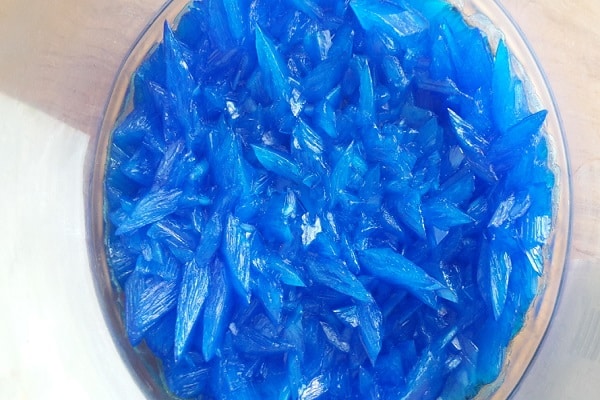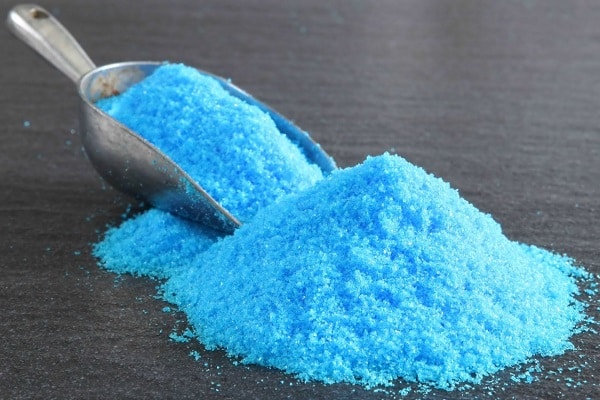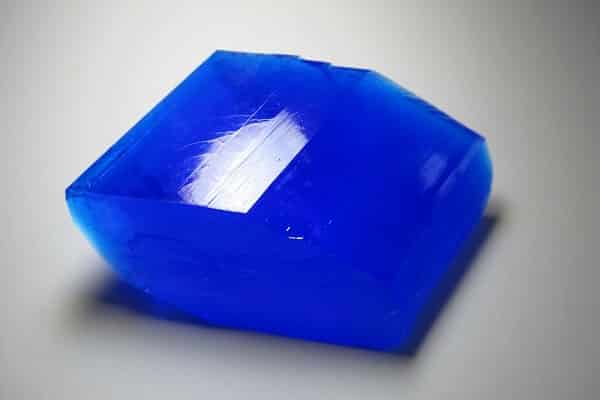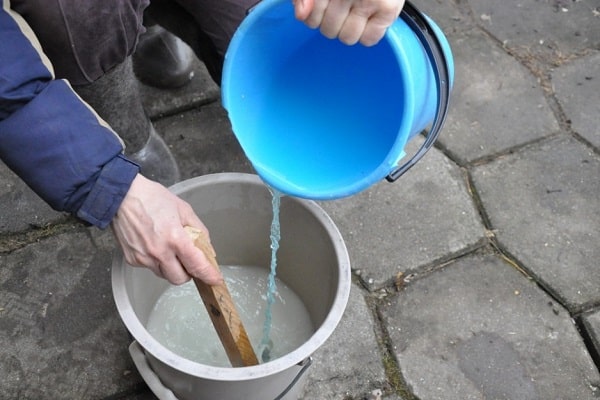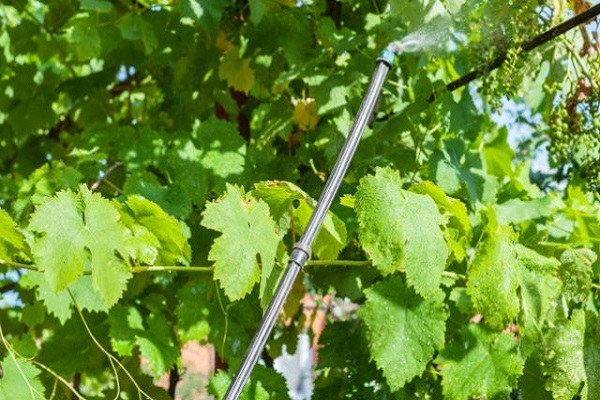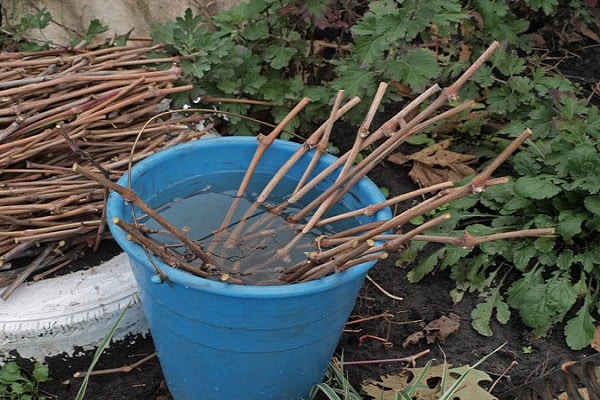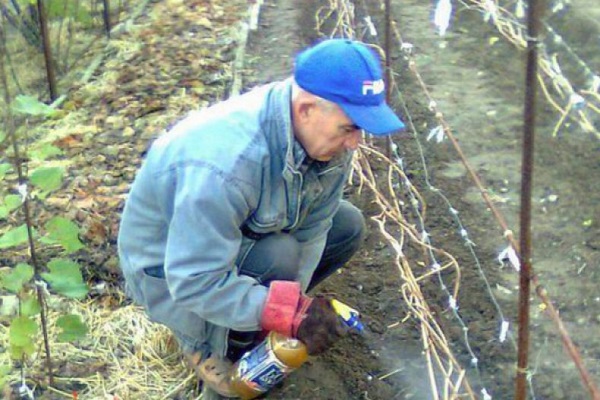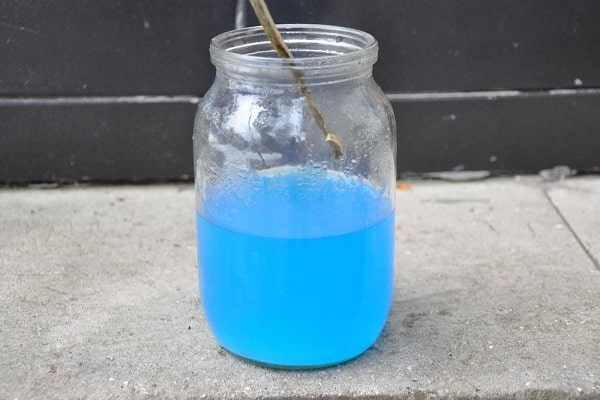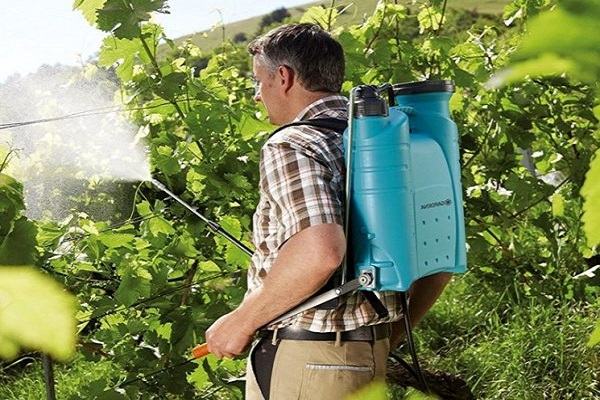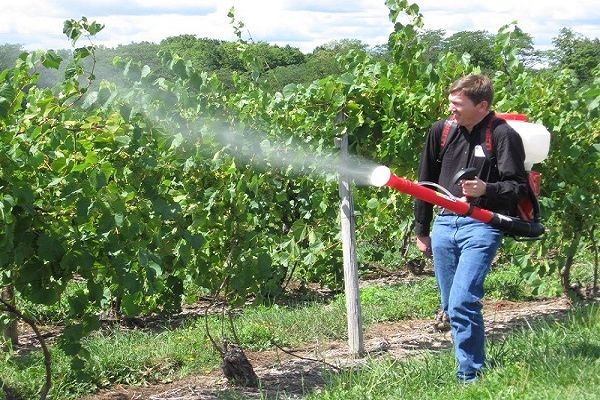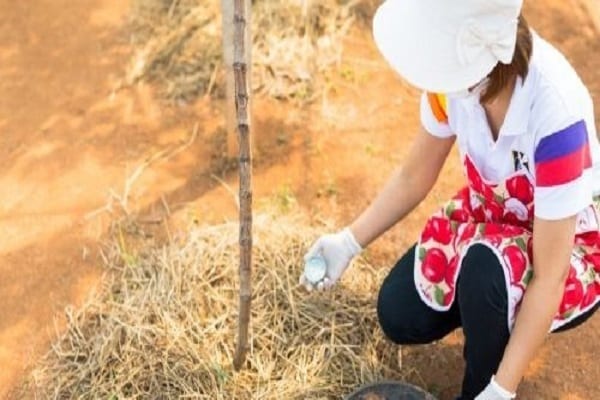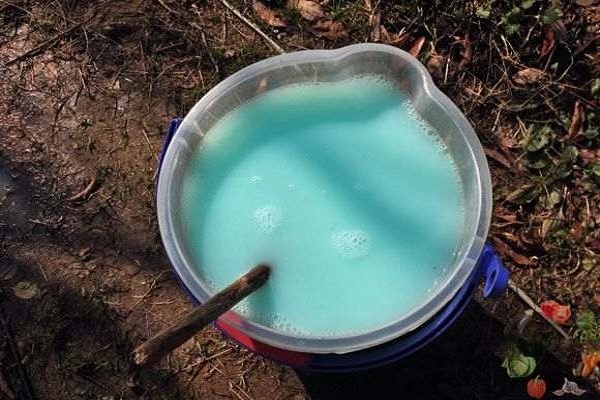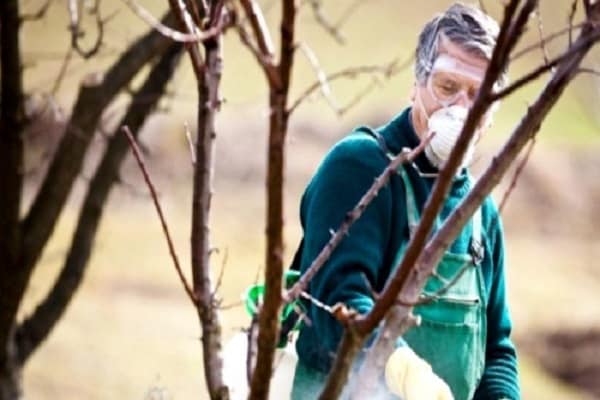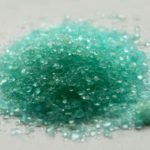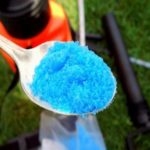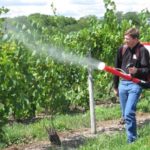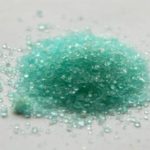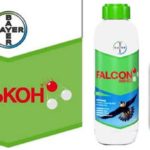Despite the efforts of breeders, most products grown on the site need protection from harmful bacteria and insects. Since ancient times, it has been believed that copper sulfate is one of the most effective means of maintaining plant immunity at the proper level. Let's figure out why copper sulfate is useful for processing grapes, and how it is carried out.
- Types of vitriol
- Composition and active substance
- Advantages and disadvantages of the drug
- Purpose
- Top dressing
- Treatment for fungal diseases
- Processing cuttings
- Disinfection of wounds
- How to use on a grape plantation
- Prepare the solution
- Dosage of copper sulfate for various treatments
- Stages and procedure for processing grapes
- Timing of the procedure
- Spraying on a dormant vine in spring
- Treatments for green leaves in summer
- in autumn
- Errors that occur during processing by the tool
- How to make your own liquid
- Safety precautions when working with chemicals
Types of vitriol
Vitriols are metal sulfates containing water of crystallization. Today the following types of vitriol are known, some of which are formed naturally, and some only artificially:
- copper;
- cobalt;
- iron;
- manganese;
- zinc (white);
- nickel.
Composition and active substance
Copper sulfate is a powdery substance with a light blue or dark blue color. It dissolves well in liquid, because for 1 molecule of copper sulfate there are 5 molecules of water. The formula of the substance is as follows – CuSO4*5H2O. The substance is not safe for the human body and has category 3.
Note! Vitriol penetrates the human body through the skin and mucous membrane. Beware of direct contact with him, because this is fraught with consequences. Do not forget about safety rules when working with it.
Advantages and disadvantages of the drug
The substance is used in gardening due to the following qualities:
- The effect after processing the crop lasts for a long time.
- Low cost.
- Wide scope of application.
- It is used sparingly, and the purchased supplies will last for a long time.
- After applying the vitriol solution to the product, its consumption is possible earlier than when treated with other preparations.
Flaws:
- It is difficult to determine the required dosage by eye, and when preparing a solution you must be guided by clear rules;
- if the liquid is too saturated with vitriol, instead of protecting against pests, you will burn the bush.
Purpose
The range of applications in gardening is wide. So, vitriol is used for:
- feeding the bush;
- treating plants against fungal infections;
- processing of grape cuttings to strengthen the immune system;
- disinfection of damaged areas of the bush.
Each method requires an individual approach and compliance with the rules specified in the instructions for use.
Top dressing
Novice gardeners are wondering if this substance can be used as a top dressing? Yes it is possible. Vitriol, as a fertilizer, is effective when grapes grow on peat bogs and sandy soils. On chernozem, the beneficial effect of the fertilizer disappears.
The substance feeds the developing plant with copper, helping to fight harmful bacteria and stimulating photosynthesis. Dosage when feeding: 4 grams of substance are added per 10 liters of liquid.
Treatment for fungal diseases
Helps in the fight against the following diseases:
- powdery mildew;
- white and brown spotting;
- scab;
- effective in the fight against mycoses.
Ingredients: water, copper sulfate, skim milk or laundry soap. Milk or soap is required to increase the effect of the drugs. If you add 100 grams of a stickiness enhancer to a bucket of water, the protective film will last longer on the plant and will not be washed off by rain.
Processing cuttings
Seedlings soaked in a 2% solution of copper sulfate have increased resistance to harmful bacteria. This procedure is carried out before planting and increases the chances of the sprout forming into a powerful, beautiful bush that produces a stable harvest.
Disinfection of wounds
To create a disinfectant solution for treating plant wounds, you need to prepare:
- 10 liters of water;
- 100 grams of substance.
Having treated the wounds of a bush or tree with the resulting medicine, you can not be afraid of their inflammation and death of the plant.
How to use on a grape plantation
Preparing a solution for treating a plantation has a lot of nuances, and the preparation technology depends on the method of applying the liquid. To properly prepare the medicine, follow the following preparation rules.
Prepare the solution
Gardeners who do not know how to prepare a solution of copper sulfate should adhere to the following rules:
- dissolve the substance in warm water;
- When preparing the mixture, do not forget about safety rules. Wear rubber gloves and other personal protective equipment available;
- Do not mix the solution in a container made of metal.
Dosage of copper sulfate for various treatments
Instructions for those who do not know how to dilute the substance for spraying:
- A 1% solution is prepared for spraying. Accordingly, no more than 100 grams of powder is diluted for 1 bucket of warm water;
- stir the water until the powder is completely dissolved;
- pour the resulting mixture into the sprayer.
Important! Do not mix copper sulfate solution with other chemicals. The effect of such a mixture is difficult to predict, and instead of a positive effect, you will destroy the plant, and possibly your health.
Stages and procedure for processing grapes
Processing stages:
- shake the container with the drug;
- carefully, observing safety regulations, spray the substance;
- Use the remaining solution to treat trees or other plants in the area.
To avoid burning the plant, check the correct dosage by treating one leaf on the bush. If after some time no traces of burns are visible, the solution has been made correctly.
Timing of the procedure
Grape processing times:
- in spring;
- in autumn;
- in summer.
Autumn treatment is considered the main one, spring treatment is considered additional, and treatment of the bush in summer is an auxiliary procedure if the plant needs it.
Spraying on a dormant vine in spring
Spring processing is carried out as follows:
- a few days before treatment, the vine is freed from the material that shelters it from the winter cold;
- make a solution;
- Apply the substance in an even, thin layer over the entire surface of the vine.
Important! Treatment is carried out before buds open, and the ambient temperature should not be lower than 5 O.
Treatments for green leaves in summer
In summer, treatment is carried out as a last resort, with a solution whose concentration does not exceed 0.5%. It is advisable to carry it out at the first signs of the disease.
in autumn
It is carried out at the end of the grape harvest, when the leaves have already fallen from the bush. The best period is considered to be the beginning or end of November. It all depends on the region of residence. Before starting processing, tie a bunch of vines around the trellis.
Errors that occur during processing by the tool
The main mistake, the commission of which will cost you the death of the bush, and, accordingly, the harvest, is the wrong dosage. The substance in high concentration will burn the grapes and harm your health. Another common mistake is processing frequency. You should not treat the bush every month, especially disease-resistant varieties.
How to make your own liquid
To prepare the liquid with your own hands, use the instructions on the packaging of the substance or the preparation technology described above. The basic dosage is considered to be a 1% solution. Using it, you will not harm the grape bush or other cultivated crop.
Safety precautions when working with chemicals
When preparing the solution and treating the plant with it, remember the main thing - safety precautions. The plant can be regrown, but its health is almost impossible to restore.
When working with copper sulfate, follow these rules:
- do not forget to wear rubber gloves on your hands. This way you will protect your skin from unwanted contact with chemicals;
- a respirator will also not be an unnecessary part in your equipment;
- It is advisable to prepare the solution outdoors or in a well-ventilated area;
- At the end of the preventive procedures, thoroughly wash your equipment and tools.

